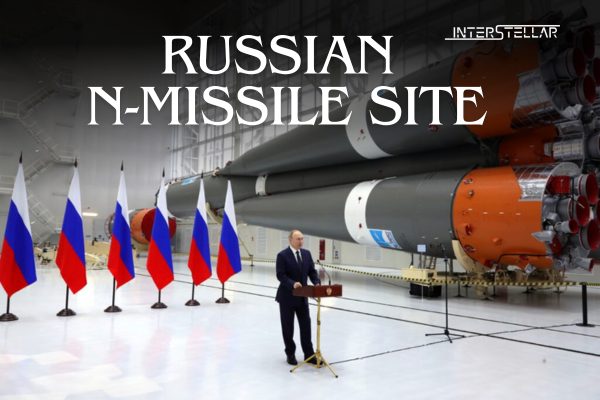Probable Russian Missile Deployment Site Identified by U.S. Experts
Discovery of Potential Burevestnik Site
Two U.S. researchers have likely identified the deployment site of Russia’s new nuclear-powered cruise missile, the 9M730 Burevestnik. This missile, which President Vladimir Putin has called “invincible,” is known in NATO as the SSC-X-9 Skyfall. Putin claims the missile has almost unlimited range and can evade US missile defences. However, Western experts question its strategic value, suggesting that it might not offer new capabilities to Moscow. They also warn about the risks of a radiation-spewing accident.

Satellite Imagery and Findings
The researchers used satellite images taken by Planet Labs on 26 July to pinpoint the site. They focused on a construction project near a nuclear warhead storage facility, known as Vologda-20 or Chebsara, located 295 miles (475 km) north of Moscow. Decker Eveleth, an analyst from the CNA research organisation, identified nine horizontal launch pads under construction. These launch pads are grouped within high berms, which could protect them from attacks or prevent accidental explosions from spreading.
These berms are connected by roads to buildings that Eveleth believes are for servicing the missiles and their components. The facility also includes five existing nuclear warhead storage bunkers. Eveleth asserts that this setup suggests the site is intended for a large, fixed missile system, likely the Skyfall.
Concerns Over Deployment and Risks
Despite this identification, neither the Russian defence ministry nor the US State Department has commented on the assessment. The missile’s deployment suggests that Russia is moving forward with the Burevestnik despite its poor test record. Since 2016, the missile has had at least 13 known tests, with only two partial successes. A significant incident occurred in 2019 during a failed recovery operation, resulting in a blast that left an unshielded nuclear reactor smouldering on the White Sea floor.
The missile’s nuclear-powered engine poses significant risks, including potential radiation release along its flight path. Experts warn that this deployment could lead to an accident that might contaminate surrounding regions. Some experts also doubt the missile’s effectiveness, labelling it as a “flying Chernobyl” that could pose more threat to Russia than its adversaries.
Putin’s Political Motive
Putin first unveiled the Burevestnik in 2018, claiming it has an unpredictable flight path and is “invincible” against current and future defences. However, many experts are sceptical of these claims, suggesting that its subsonic speed makes it detectable and vulnerable. Additionally, the missile’s deployment does not violate the New START treaty, the last US-Russian accord limiting strategic nuclear weapons.
Some believe Putin uses the Burevestnik as a political tool to bolster his strongman image and signal his dissatisfaction with US missile defences. Despite its questionable effectiveness, the missile may serve as a bargaining chip if US-Russian arms control talks resume.





